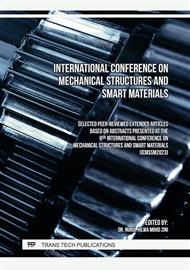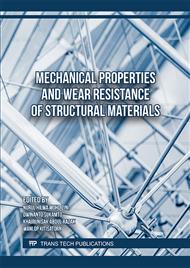p.3
p.9
p.17
p.23
p.29
p.35
p.41
p.47
p.55
Effect of Graphene Nanoplatelets on Flexural Behavior of Glass Fiber Reinforced Polymer Composites Subjected to Different Temperatures
Abstract:
Glass Fiber Reinforced Polymer (GFRP) Composite are increasing rapidly in Aerospace Industry, Civil and Wind energy sectors, where they can frequently be exposed to different temperature conditions. As the constituent polymer matrix is highly affected by temperature, extreme temperature conditions are critical for GFRP composite structural design. Researchers have recently found nanofillers such as graphene and carbon nanotubes with excellent multifunctional mechanical properties. Graphene Nanoplatelets (GnP) consist of several layers of graphene. GnP is considering an attractive nanofillers as it has improved polymer matrix properties. In this study, the weight percentage of GnP added in GnP-GFRP laminate is 0.25% and 0.5%.GFRP and GnP-GFRP laminates are fabricated by using the hand lay-up method, and the specimens are subjected to a three-point bending test in a thermal chamber with varying the temperature, i.e., 30°C, 50°C, 75°C, and 100°C. This paper investigates the effect of graphene nanoplatelets on the flexural behavior of glass fiber-reinforced polymer composites subjected to different temperatures. Flexural strength and modulus are evaluated, and the appropriate conclusions are determined. GFRP with 0.25% GnP shows higher strength than the neat and 0.5% GnP-GFRP. Here, it has also been shown that flexural strength and modulus decrease significantly with increasing temperature.
Info:
Periodical:
Pages:
29-33
Citation:
Online since:
October 2023
Authors:
Price:
Сopyright:
© 2023 Trans Tech Publications Ltd. All Rights Reserved
Share:
Citation:



